
Share this
Pregnancy is the time during which one or more offspring develops (gestates) inside a woman’s uterus (womb). A multiple pregnancy involves more than one offspring, such as with twins.
Pregnancy usually occurs by sexual intercourse, but can also occur through assisted reproductive technology procedures. A pregnancy may end in a live birth, a miscarriage, an induced abortion, or a stillbirth. Childbirth typically occurs around 40 weeks from the start of the last menstrual period (LMP), a span known as the gestational age. This is just over nine months. Counting by fertilization age, the length is about 38 weeks. Pregnancy is “the presence of an implanted human embryo or fetus in the uterus”; implantation occurs on average 8–9 days after fertilization. An embryo is the term for the developing offspring during the first seven weeks following implantation (i.e. ten weeks’ gestational age), after which the term fetus is used until birth.
Signs and symptoms of early pregnancy may include missed periods, tender breasts, morning sickness (nausea and vomiting), hunger, implantation bleeding, and frequent urination. Pregnancy may be confirmed with a pregnancy test. Methods of birth control—or, more accurately, contraception—are used to avoid pregnancy.
Pregnancy is divided into three trimesters of approximately three months each. The first trimester includes conception, which is when the sperm fertilizes the egg. The fertilized egg then travels down the Fallopian tube and attaches to the inside of the uterus, where it begins to form the embryo and placenta. During the first trimester, the possibility of miscarriage (natural death of embryo or fetus) is at its highest. Around the middle of the second trimester, movement of the fetus may be felt. At 28 weeks, more than 90% of babies can survive outside of the uterus if provided with high-quality medical care, though babies born at this time will likely experience serious health complications such as heart and respiratory problems and long-term intellectual and developmental disabilities.
Prenatal care improves pregnancy outcomes. Nutrition during pregnancy is important to ensure healthy growth of the fetus. Prenatal care may also include avoiding recreational drugs (including tobacco and alcohol), taking regular exercise, having blood tests, and regular physical examinations. Complications of pregnancy may include disorders of high blood pressure, gestational diabetes, iron-deficiency anemia, and severe nausea and vomiting.[3] In the ideal childbirth, labor begins on its own “at term”. Babies born before 37 weeks are “preterm” and at higher risk of health problems such as cerebral palsy. Babies born between weeks 37 and 39 are considered “early term” while those born between weeks 39 and 41 are considered “full term”. Babies born between weeks 41 and 42 weeks are considered “late-term” while after 42 weeks they are considered “post-term”. Delivery before 39 weeks by labor induction or caesarean section is not recommended unless required for other medical reasons.
Terminology
Associated terms for pregnancy are gravid and parous. Gravidus and gravid come from the Latin word meaning “heavy” and a pregnant female is sometimes referred to as a gravida. Gravidity refers to the number of times that a female has been pregnant. Similarly, the term parity is used for the number of times that a female carries a pregnancy to a viable stage. Twins and other multiple births are counted as one pregnancy and birth.
A woman who has never been pregnant is referred to as a nulligravida. A woman who is (or has been only) pregnant for the first time is referred to as a primigravida, and a woman in subsequent pregnancies as a multigravida or as multiparous. Therefore, during a second pregnancy a woman would be described as gravida 2, para 1 and upon live delivery as gravida 2, para 2. In-progress pregnancies, abortions, miscarriages and/or stillbirths account for parity values being less than the gravida number. Women who have never carried a pregnancy more than 20 weeks are referred to as nulliparous.
A pregnancy is considered term at 37 weeks of gestation. It is preterm if less than 37 weeks and postterm at or beyond 42 weeks of gestation. American College of Obstetricians and Gynecologists have recommended further division with early term 37 weeks up to 39 weeks, full term 39 weeks up to 41 weeks, and late term 41 weeks up to 42 weeks. The terms preterm and postterm have largely replaced earlier terms of premature and postmature. Preterm and postterm are defined above, whereas premature and postmature have historical meaning and relate more to the infant’s size and state of development rather than to the stage of pregnancy.
Demographics and statistics
About 213 million pregnancies occurred in 2012, of which, 190 million (89%) were in the developing world and 23 million (11%) were in the developed world. The number of pregnancies in women aged between 15 and 44 is 133 per 1,000 women. About 10% to 15% of recognized pregnancies end in miscarriage. In 2016, complications of pregnancy resulted in 230,600 maternal deaths, down from 377,000 deaths in 1990. Common causes include bleeding, infections, hypertensive diseases of pregnancy, obstructed labor, miscarriage, abortion, or ectopic pregnancy. Globally, 44% of pregnancies are unplanned. Over half (56%) of unplanned pregnancies are aborted. Among unintended pregnancies in the United States, 60% of the women used birth control to some extent during the month pregnancy began.
Signs and symptoms
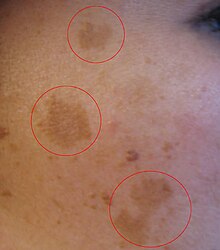
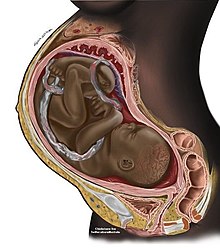
The usual signs and symptoms of pregnancy do not significantly interfere with activities of daily living or pose a health-threat to the mother or baby. However, pregnancy complications can cause other more severe symptoms, such as those associated with anemia.
Common signs and symptoms of pregnancy include:
- Tiredness
- Morning sickness
- Constipation
- Pelvic girdle pain
- Back pain
- Braxton Hicks contractions. Occasional, irregular, and often painless contractions that occur several times per day.
- Peripheral edema swelling of the lower limbs. Common complaint in advancing pregnancy. Can be caused by inferior vena cava syndrome resulting from compression of the inferior vena cava and pelvic veins by the uterus leading to increased hydrostatic pressure in lower extremities.
- Low blood pressure often caused by compression of both the inferior vena cava and the abdominal aorta (aortocaval compression syndrome).
- Increased urinary frequency. A common complaint, caused by increased intravascular volume, elevated glomerular filtration rate, and compression of the bladder by the expanding uterus.
- Urinary tract infection
- Varicose veins. Common complaint caused by relaxation of the venous smooth muscle and increased intravascular pressure.
- Hemorrhoids (piles). Swollen veins at or inside the anal area. Caused by impaired venous return, straining associated with constipation, or increased intra-abdominal pressure in later pregnancy.
- Regurgitation, heartburn, and nausea.
- Stretch marks
- Breast tenderness is common during the first trimester, and is more common in women who are pregnant at a young age.
- Melasma, also known as the mask of pregnancy, is a discoloration, most often of the face. It usually begins to fade several months after giving birth.
Timeline
| Event | Gestational age (from the start of the last menstrual period) | Fertilization age | Implantation age |
|---|---|---|---|
| Menstrual period begins | Day 1 of pregnancy | Not pregnant | Not pregnant |
| Has sex and ovulates | 2 weeks pregnant | Not pregnant | Not pregnant |
| Fertilization; cleavage stage begins | Day 15 | Day 1 | Not pregnant |
| Implantation of blastocyst begins | Day 20 | Day 6 | Day 0 |
| Implantation finished | Day 26 | Day 12 | Day 6 (or Day 0) |
| Embryo stage begins; also, first missed period | 4 weeks | Day 15 | Day 9 |
| Primitive heart function can be detected | 5 weeks, 5 days | Day 26 | Day 20 |
| Fetal stage begins | 10 weeks, 1 day | 8 weeks, 1 day | 7 weeks, 2 days |
| First trimester ends | 13 weeks | 11 weeks | 10 weeks |
| Second trimester ends | 26 weeks | 24 weeks | 23 weeks |
| Childbirth | 39–40 weeks | 37–38 weeks 108 | 36–37 weeks |
The chronology of pregnancy is, unless otherwise specified, generally given as gestational age, where the starting point is the beginning of the woman’s last menstrual period (LMP), or the corresponding age of the gestation as estimated by a more accurate method if available. This model means that the woman is counted as being “pregnant” two weeks before conception and three weeks before implantation. Sometimes, timing may also use the fertilization age, which is the age of the embryo since conception.
Start of gestational age
The American Congress of Obstetricians and Gynecologists recommends the following methods to calculate gestational age:
- Directly calculating the days since the beginning of the last menstrual period.
- Early obstetric ultrasound, comparing the size of an embryo or fetus to that of a reference group of pregnancies of known gestational age (such as calculated from last menstrual periods), and using the mean gestational age of other embryos or fetuses of the same size. If the gestational age as calculated from an early ultrasound is contradictory to the one calculated directly from the last menstrual period, it is still the one from the early ultrasound that is used for the rest of the pregnancy.
- In case of in vitro fertilization, calculating days since oocyte retrieval or co-incubation and adding 14 days.
Trimesters
Pregnancy is divided into three trimesters, each lasting for approximately three months. The exact length of each trimester can vary between sources.
- The first trimester begins with the start of gestational age as described above, that is, the beginning of week 1, or 0 weeks + 0 days of gestational age (GA). It ends at week 12 (11 weeks + 6 days of GA) or end of week 14 (13 weeks + 6 days of GA).
- The second trimester is defined as starting, between the beginning of week 13 (12 weeks +0 days of GA) and beginning of week 15 (14 weeks + 0 days of GA). It ends at the end of week 27 (26 weeks + 6 days of GA) or end of week 28 (27 weeks + 6 days of GA).
- The third trimester is defined as starting, between the beginning of week 28 (27 weeks + 0 days of GA) or beginning of week 29 (28 weeks + 0 days of GA). It lasts until childbirth.

Estimation of due date

Due date estimation basically follows two steps:
- Determination of which time point is to be used as origin for gestational age, as described in the section above.
- Adding the estimated gestational age at childbirth to the above time point. Childbirth on average occurs at a gestational age of 280 days (40 weeks), which is therefore often used as a standard estimation for individual pregnancies. However, alternative durations as well as more individualized methods have also been suggested.
The American College of Obstetricians and Gynecologists divides full term into three divisions:
- Early-term: 37 weeks and 0 days through 38 weeks and 6 days
- Full-term: 39 weeks and 0 days through 40 weeks and 6 days
- Late-term: 41 weeks and 0 days through 41 weeks and 6 days
- Post-term: greater than or equal to 42 weeks and 0 days
Naegele’s rule is a standard way of calculating the due date for a pregnancy when assuming a gestational age of 280 days at childbirth. The rule estimates the expected date of delivery (EDD) by adding a year, subtracting three months, and adding seven days to the origin of gestational age. Alternatively there are mobile apps, which essentially always give consistent estimations compared to each other and correct for leap year, while pregnancy wheels made of paper can differ from each other by 7 days and generally do not correct for leap year.
Furthermore, actual childbirth has only a certain probability of occurring within the limits of the estimated due date. A study of singleton live births came to the result that childbirth has a standard deviation of 14 days when gestational age is estimated by first trimester ultrasound, and 16 days when estimated directly by last menstrual period.
Physiology
Capacity
Fertility and fecundity are the respective capacities to fertilize and establish a clinical pregnancy and have a live birth. Infertility is an impaired ability to establish a clinical pregnancy and sterility is the permanent inability to establish a clinical pregnancy.
The capacity for pregnancy depends on the reproductive system, its development and its variation, as well as on the condition of a person. Women as well as intersex and transgender people who have a functioning female reproductive system are capable of pregnancy. In some cases, someone might be able to produce fertilizable eggs, but might not have a womb or none that can sufficiently gestate, in which case they might find surrogacy.
Initiation
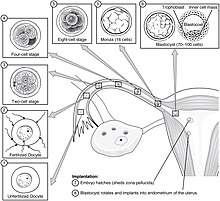
Through an interplay of hormones that includes follicle stimulating hormone that stimulates folliculogenesis and oogenesis creates a mature egg cell, the female gamete. Fertilization is the event where the egg cell fuses with the male gamete, spermatozoon. After the point of fertilization, the fused product of the female and male gamete is referred to as a zygote or fertilized egg. The fusion of female and male gametes usually occurs following the act of sexual intercourse. Pregnancy rates for sexual intercourse are highest during the menstrual cycle time from some 5 days before until 1 to 2 days after ovulation. Fertilization can also occur by assisted reproductive technology such as artificial insemination and in vitro fertilisation.
Fertilization (conception) is sometimes used as the initiation of pregnancy, with the derived age being termed fertilization age. Fertilization usually occurs about two weeks before the next expected menstrual period.
A third point in time is also considered by some people to be the true beginning of a pregnancy: This is time of implantation, when the future fetus attaches to the lining of the uterus. This is about a week to ten days after fertilization.
Development of embryo and fetus
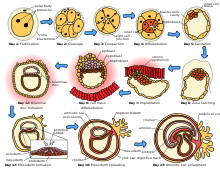
The sperm and the egg cell, which has been released from one of the female’s two ovaries, unite in one of the two Fallopian tubes. The fertilized egg, known as a zygote, then moves toward the uterus, a journey that can take up to a week to complete. Cell division begins approximately 24 to 36 hours after the female and male cells unite. Cell division continues at a rapid rate and the cells then develop into what is known as a blastocyst. The blastocyst arrives at the uterus and attaches to the uterine wall, a process known as implantation.
The development of the mass of cells that will become the infant is called embryogenesis during the first approximately ten weeks of gestation. During this time, cells begin to differentiate into the various body systems. The basic outlines of the organ, body, and nervous systems are established. By the end of the embryonic stage, the beginnings of features such as fingers, eyes, mouth, and ears become visible. Also during this time, there is development of structures important to the support of the embryo, including the placenta and umbilical cord. The placenta connects the developing embryo to the uterine wall to allow nutrient uptake, waste elimination, and gas exchange via the mother’s blood supply. The umbilical cord is the connecting cord from the embryo or fetus to the placenta.
After about ten weeks of gestational age—which is the same as eight weeks after conception—the embryo becomes known as a fetus. At the beginning of the fetal stage, the risk of miscarriage decreases sharply. At this stage, a fetus is about 30 mm (1.2 inches) in length, the heartbeat is seen via ultrasound, and the fetus makes involuntary motions. During continued fetal development, the early body systems, and structures that were established in the embryonic stage continue to develop. Sex organs begin to appear during the third month of gestation. The fetus continues to grow in both weight and length, although the majority of the physical growth occurs in the last weeks of pregnancy.
Electrical brain activity is first detected at the end of week 5 of gestation, but as in brain-dead patients, it is primitive neural activity rather than the beginning of conscious brain activity. Synapses do not begin to form until week 17. Neural connections between the sensory cortex and thalamus develop as early as 24 weeks’ gestational age, but the first evidence of their function does not occur until around 30 weeks, when minimal consciousness, dreaming, and the ability to feel pain emerges.
Although the fetus begins to move during the first trimester, it is not until the second trimester that movement, known as quickening, can be felt. This typically happens in the fourth month, more specifically in the 20th to 21st week, or by the 19th week if the woman has been pregnant before. It is common for some women not to feel the fetus move until much later. During the second trimester, when the body size changes, maternity clothes may be worn.
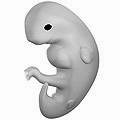
Embryo at 4 weeks after fertilization (gestational age of 6 weeks)

Fetus at 8 weeks after fertilization (gestational age of 10 weeks)

Fetus at 18 weeks after fertilization (gestational age of 20 weeks)
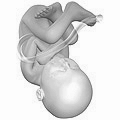
Fetus at 38 weeks after fertilization (gestational age of 40 weeks)

Relative size in 1st month (simplified illustration)

Relative size in 3rd month (simplified illustration)

Relative size in 5th month (simplified illustration)

Relative size in 9th month (simplified illustration)
Maternal changes


During pregnancy, a woman undergoes many normal physiological changes, including behavioral, cardiovascular, hematologic, metabolic, renal, and respiratory changes. Increases in blood sugar, breathing, and cardiac output are all required. Levels of progesterone and estrogens rise continually throughout pregnancy, suppressing the hypothalamic axis and therefore the menstrual cycle. A full-term pregnancy at an early age (less than 25 years) reduces the risk of breast, ovarian, and endometrial cancer, and the risk declines further with each additional full-term pregnancy.

The fetus is genetically different from its mother and can therefore be viewed as an unusually successful allograft. The main reason for this success is increased immune tolerance during pregnancy, which prevents the mother’s body from mounting an immune system response against certain triggers.
During the first trimester, minute ventilation increases by 40 percent. The womb will grow to the size of a lemon by eight weeks. Many symptoms and discomforts of pregnancy, such as nausea and tender breasts, appear in the first trimester.
During the second trimester, most women feel more energized and put on weight as the symptoms of morning sickness subside. They begin to feel regular fetal movements, which can become strong and even disruptive.
Braxton Hicks contractions are sporadic uterine contractions that may start around six weeks into a pregnancy; however, they are usually not felt until the second or third trimester.
Final weight gain takes place during the third trimester; this is the most weight gain throughout the pregnancy. The woman’s abdomen will transform in shape as the fetus turns in a downward position ready for birth. The woman’s navel will sometimes become convex, “popping” out, due to the expanding abdomen. The uterus, the muscular organ that holds the developing fetus, can expand up to 20 times its normal size during pregnancy.
Head engagement, also called “lightening” or “dropping”, occurs as the fetal head descends into a cephalic presentation. While it relieves pressure on the upper abdomen and gives a renewed ease in breathing, it also severely reduces bladder capacity, resulting in a need to void more frequently, and increases pressure on the pelvic floor and the rectum. It is not possible to predict when lightening will occur. In a first pregnancy it may happen a few weeks before the due date, though it may happen later or even not until labor begins, as is typical with subsequent pregnancies.
It is during the third trimester that maternal activity and sleep positions may affect fetal development due to restricted blood flow. For instance, the enlarged uterus may impede blood flow by compressing the vena cava when lying flat, a conditioned that can be relieved by lying on the left side.
Childbirth
Childbirth, referred to as labor and delivery in the medical field, is the process whereby an infant is born.
A woman is considered to be in labour when she begins experiencing regular uterine contractions, accompanied by changes of her cervix—primarily effacement and dilation. While childbirth is widely experienced as painful, some women do report painless labours, while others find that concentrating on the birth helps to quicken labour and lessen the sensations. Most births are successful vaginal births, but sometimes complications arise and a woman may undergo a cesarean section.
During the time immediately after birth, both the mother and the baby are hormonally cued to bond, the mother through the release of oxytocin, a hormone also released during breastfeeding. Studies show that skin-to-skin contact between a mother and her newborn immediately after birth is beneficial for both the mother and baby. A review done by the World Health Organization found that skin-to-skin contact between mothers and babies after birth reduces crying, improves mother–infant interaction, and helps mothers to breastfeed successfully. They recommend that neonates be allowed to bond with the mother during their first two hours after birth, the period that they tend to be more alert than in the following hours of early life.
Childbirth maturity stages
| stage | starts | ends |
|---|---|---|
| Preterm | – | at 37 weeks |
| Early term | 37 weeks | 39 weeks |
| Full term | 39 weeks | 41 weeks |
| Late term | 41 weeks | 42 weeks |
| Postterm | 42 weeks | – |
In the ideal childbirth labor begins on its own when a woman is “at term”. Events before completion of 37 weeks are considered preterm. Preterm birth is associated with a range of complications and should be avoided if possible.
Sometimes if a woman’s water breaks or she has contractions before 39 weeks, birth is unavoidable. However, spontaneous birth after 37 weeks is considered term and is not associated with the same risks of a preterm birth. Planned birth before 39 weeks by caesarean section or labor induction, although “at term”, results in an increased risk of complications. This is from factors including underdeveloped lungs of newborns, infection due to underdeveloped immune system, feeding problems due to underdeveloped brain, and jaundice from underdeveloped liver.
Babies born between 39 and 41 weeks’ gestation have better outcomes than babies born either before or after this range. This special time period is called “full term”. Whenever possible, waiting for labor to begin on its own in this time period is best for the health of the mother and baby. The decision to perform an induction must be made after weighing the risks and benefits, but is safer after 39 weeks.
Events after 42 weeks are considered postterm. When a pregnancy exceeds 42 weeks, the risk of complications for both the woman and the fetus increases significantly. Therefore, in an otherwise uncomplicated pregnancy, obstetricians usually prefer to induce labour at some stage between 41 and 42 weeks.
Postnatal period
The postpartum period also referred to as the puerperium, is the postnatal period that begins immediately after delivery and extends for about six weeks. During this period, the mother’s body begins the return to pre-pregnancy conditions that includes changes in hormone levels and uterus size.
Diagnosis
The beginning of pregnancy may be detected either based on symptoms by the woman herself, or by using pregnancy tests. However, an important condition with serious health implications that is quite common is the denial of pregnancy by the pregnant woman. About 1 in 475 denials will last until around the 20th week of pregnancy. The proportion of cases of denial, persisting until delivery is about 1 in 2500. Conversely, some non-pregnant women have a very strong belief that they are pregnant along with some of the physical changes. This condition is known as a false pregnancy.
Physical signs

Most pregnant women experience a number of symptoms, which can signify pregnancy. A number of early medical signs are associated with pregnancy. These signs include:
- the presence of human chorionic gonadotropin (hCG) in the blood and urine
- missed menstrual period
- implantation bleeding that occurs at implantation of the embryo in the uterus during the third or fourth week after last menstrual period
- increased basal body temperature sustained for over two weeks after ovulation
- Chadwick’s sign (bluish discolouration of the cervix, vagina, and vulva)
- Goodell’s sign (softening of the vaginal portion of the cervix)
- Hegar’s sign (softening of the uterine isthmus)
- Pigmentation of the linea alba, called linea nigra (darkening of the skin in a midline of the abdomen, resulting from hormonal changes, usually appearing around the middle of pregnancy).
- Darkening of the nipples and areolas due to an increase in hormones.
Biomarkers
Pregnancy detection can be accomplished using one or more various pregnancy tests, which detect hormones generated by the newly formed placenta, serving as biomarkers of pregnancy. Blood and urine tests can detect pregnancy by 11 and 14 days, respectively, after fertilization. Blood pregnancy tests are more sensitive than urine tests (giving fewer false negatives). Home pregnancy tests are urine tests, and normally detect a pregnancy 12 to 15 days after fertilization. A quantitative blood test can determine approximately the date the embryo was fertilized because hCG levels double every 36 to 72 hours before 8 weeks’ gestation. A single test of progesterone levels can also help determine how likely a fetus will survive in those with a threatened miscarriage (bleeding in early pregnancy), but only if the ultrasound result was inconclusive.
Ultrasound
Obstetric ultrasonography can detect fetal abnormalities, detect multiple pregnancies, and improve gestational dating at 24 weeks. The resultant estimated gestational age and due date of the fetus are slightly more accurate than methods based on last menstrual period. Ultrasound is used to measure the nuchal fold in order to screen for Down syndrome.
Management
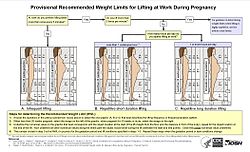
Prenatal care
Pre-conception counseling is care that is provided to a woman or couple to discuss conception, pregnancy, current health issues and recommendations for the period before pregnancy.
Prenatal medical care is the medical and nursing care recommended for women during pregnancy, time intervals and exact goals of each visit differ by country. Women who are high risk have better outcomes if they are seen regularly and frequently by a medical professional than women who are low risk. A woman can be labeled as high risk for different reasons including previous complications in pregnancy, complications in the current pregnancy, current medical diseases, or social issues.
The aim of good prenatal care is prevention, early identification, and treatment of any medical complications. A basic prenatal visit consists of measurement of blood pressure, fundal height, weight and fetal heart rate, checking for symptoms of labor, and guidance for what to expect next.
Nutrition
Nutrition during pregnancy is important to ensure healthy growth of the fetus. Nutrition during pregnancy is different from the non-pregnant state.[16] There are increased energy requirements and specific micronutrient requirements. Women benefit from education to encourage a balanced energy and protein intake during pregnancy. Some women may need professional medical advice if their diet is affected by medical conditions, food allergies, or specific religious/ ethical beliefs. Further studies are needed to access the effect of dietary advice to prevent gestational diabetes, although low quality evidence suggests some benefit. Adequate periconceptional (time before and right after conception) folic acid (also called folate or Vitamin B9) intake has been shown to decrease the risk of fetal neural tube defects, such as spina bifida. The neural tube develops during the first 28 days of pregnancy, a urine pregnancy test is not usually positive until 14 days post-conception, explaining the necessity to guarantee adequate folate intake before conception. Folate is abundant in green leafy vegetables, legumes, and citrus. In the United States and Canada, most wheat products (flour, noodles) are fortified with folic acid.
Weight gain

The amount of healthy weight gain during a pregnancy varies. Weight gain is related to the weight of the baby, the placenta, extra circulatory fluid, larger tissues, and fat and protein stores. Most needed weight gain occurs later in pregnancy.
The Institute of Medicine recommends an overall pregnancy weight gain for those of normal weight (body mass index of 18.5–24.9), of 11.3–15.9 kg (25–35 pounds) having a singleton pregnancy. Women who are underweight (BMI of less than 18.5), should gain between 12.7 and 18 kg (28–40 lb), while those who are overweight (BMI of 25–29.9) are advised to gain between 6.8 and 11.3 kg (15–25 lb) and those who are obese (BMI ≥ 30) should gain between 5–9 kg (11–20 lb). These values reference the expectations for a term pregnancy.
During pregnancy, insufficient or excessive weight gain can compromise the health of the mother and fetus. The most effective intervention for weight gain in underweight women is not clear. Being or becoming overweight in pregnancy increases the risk of complications for mother and fetus, including cesarean section, gestational hypertension, pre-eclampsia, macrosomia and shoulder dystocia. Excessive weight gain can make losing weight after the pregnancy difficult. Some of these complications are risk factors for stroke.
Around 50% of women of childbearing age in developed countries like the United Kingdom are overweight or obese before pregnancy. Diet modification is the most effective way to reduce weight gain and associated risks in pregnancy.
Medication
Drugs used during pregnancy can have temporary or permanent effects on the fetus. Anything (including drugs) that can cause permanent deformities in the fetus are labeled as teratogens. In the U.S., drugs were classified into categories A, B, C, D and X based on the Food and Drug Administration (FDA) rating system to provide therapeutic guidance based on potential benefits and fetal risks. Drugs, including some multivitamins, that have demonstrated no fetal risks after controlled studies in humans are classified as Category A. On the other hand, drugs like thalidomide with proven fetal risks that outweigh all benefits are classified as Category X.
Recreational drugs
The use of recreational drugs in pregnancy can cause various pregnancy complications.
- Alcoholic drinks consumed during pregnancy can cause one or more fetal alcohol spectrum disorders. According to the CDC, there is no known safe amount of alcohol during pregnancy and no safe time to drink during pregnancy, including before a woman knows that she is pregnant.
- Tobacco smoking during pregnancy can cause a wide range of behavioral, neurological, and physical difficulties. Smoking during pregnancy causes twice the risk of premature rupture of membranes, placental abruption and placenta previa. Smoking is associated with 30% higher odds of preterm birth.
- Prenatal cocaine exposure is associated with premature birth, birth defects and attention deficit disorder.
- Prenatal methamphetamine exposure can cause premature birth and congenital abnormalities. Short-term neonatal outcomes in methamphetamine babies show small deficits in infant neurobehavioral function and growth restriction. Long-term effects in terms of impaired brain development may also be caused by methamphetamine use.
- Cannabis in pregnancy has been shown to be teratogenic in large doses in animals, but has not shown any teratogenic effects in human
Should I Have a Baby Bump at 17 Weeks? Pregnancy Symptoms

At 17 weeks of pregnancy, your baby bump may begin to be more visible as your fetus grows, although some women don’t show for a few more weeks
At 17 weeks of pregnancy, your baby bump may begin to be more visible, although some women don’t show for a few more weeks.
Your fetus is growing, and your body is undergoing various changes. The round ligaments that support the uterus thicken and are stretched. The uterus continues to expand, and the internal organs start repositioning to provide space to accommodate the growing fetus. The center of gravity changes at this stage, and you may feel off balance.
The umbilical cord starts getting longer and thicker to provide the increasing demand for nutrients from the baby. Changes in your body are attributed to the decreased level of human chorionic gonadotropin hormone and adjustments to the level of estrogen and progesterone hormones.
As your baby bump becomes more visible, your uterus can be felt through the abdominal wall.
Most women find the second trimester to be more manageable because morning sickness fades, and acute exhaustion and breast soreness subside.
Most early pregnancy symptoms will have reduced or disappeared as the fetal metabolic and oxygen supply is taken over by the placenta. Your breast size may increase as your milk glands start to prepare to breastfeed.
Symptoms specific week 17 of pregnancy include:
- Sciatic nerve pain, as the growing fetus puts pressure on the nerve fibers
- Rashes or new allergies
- Dark patches on the face
- Lower back and pelvic pain
- Gastrointestinal problems, such as heartburn and indigestion
- Vaginal discharge
- Weight gain
Fetal development at 17 weeks
At 17 weeks, the fetus typically weighs around 150 grams and measures 13 cm from the crown to butt. The fetus continues to grow in proportion with its head.
The skeleton, which is made up of soft cartilage, starts transitioning to a solid bone. Major body systems are getting established. Hair, eyebrows, and eyelashes grow longer, and the fetus can open and close its mouth and move its eyeballs even though the eyes are still shut. The heart is now controlled by the brain and may be beating at 140-150 beats per minute. Most of the survival reflexes, such as sucking and swallowing, are being perfected in the uterus during this time.
What tests should be done at 17 weeks?
During your check-up, your doctor may measure the height of your uterus to gauge your baby’s growth, as well as check your weight, blood pressure, and fetal heart rate. To ensure the proper growth of the fetus, your doctor may advise a few screening tests to rule out chromosomal aberrations and neural tube defects. Tests include
- Ultrasound
- Triple screen test
- Amniocentesis
- Urine sample to check sugar and protein levels
- One-hour glucose tolerance test
- Cell-free fetal DNA test
What to do at 17 weeks of pregnancy
- You should consume your daily recommended extra calories, which will provide adequate nutrition for both you and your baby.
- Increase the intake of foods with omega acids because this helps with the baby’s eye and brain development.
- Stick to flats or low-heeled shoes to address the change in the center of gravity due to internal organ repositioning.
- Take multivitamins containing iron, folic acid, and calcium.
- Increase the uptake of vitamin D (per doctor recommendation) for bone health and development.
- Practice stress management and get plenty of sleep.
- Exercise regularly.
Your Baby’s Growth: Conception to Birth

Congratulations on becoming pregnant! We are sure you are curious about how your pregnancy will progress, and how your baby will develop week to week over the next few months. In this slideshow we will look inside the womb to see how a baby develops through the first, second, and third trimesters.
Conception

Step one of conception is when the sperm penetrates the egg to complete the genetic make-up of a human fetus. At this moment (conception), the sex and genetic make-up of the fetus begins. About three days later, the fertilized egg cell divides rapidly and then passes through the Fallopian tube into the uterus, where it attaches to the uterine wall. The attachment site provides nourishment to the rapidly developing fetus and becomes the placenta.
Baby’s Development at 4 Weeks

After 4 weeks, the basic structures of the embryo have begun to develop into separate areas that will form the head, chest, abdomen, and the organs contained within them. Small buds on the surface will become arms and legs. A home pregnancy test should be positive at this stage of development (most tests claim positive results one week after a missed period).
Baby’s Development at 8 Weeks

At 8 weeks, the fetus is about a half-inch long (1.1cm). Facial features such as developing ears, eyelids, and nose tip are present. The limb buds are now clearly arms and legs, while the fingers and toes are still developing.
Baby’s Development at 12 Weeks

At 12 weeks, the fetus has grown to about 2 inches (4.4cm) in length and may begin to move by itself. The fingers and toes are discernible, and the fetal heartbeat may be audible by Doppler ultrasound. The developing sex organs may be identified by ultrasound techniques.
Baby’s Development at 16 Weeks

At 16 weeks, the fetus is about 4 and one-half inches long and resembles an infant; the eyes blink, the heartbeat is easier to locate, facial features (nose, mouth, chin and ears) are distinct, and the fingers and toes are clearly developed; the skin on the fingers and toes even has distinct patterns (fingerprints!). Women should be able to feel the uterus at about 3 inches (6.6 cm) below the belly button; this is the beginning of the “baby bump” (abdominal swelling due to an expanding uterus) in some women.
Baby’s Development at 20 Weeks

At 20 weeks, the developing fetus is about 6 inches long (13.2 cm) and may weigh about 10 ounces. The baby may begin to make movements that the mother can feel at about 19 to 21 weeks; this baby movement is termed “quickening”. The baby at this stage of development can move its facial muscles, yawn, and suck its thumb. The expanding uterus at 20 weeks is felt at the level of the belly button.
It’s Time for an Ultrasound

In the US, women that have prenatal care usually have an ultrasound done at 20 weeks to determine that the placenta is attached normally and that the baby is developing without any problems. The baby’s movements can be seen with Doppler imaging, and usually the sex of the baby can be determined at this time, so if you want to be surprised about the sex of your baby at delivery, let your doctor know before the Doppler ultrasound is started!
Shown here is a 2D ultrasound (inset) contrasted with a 4D ultrasound, both at 20 weeks.
Baby’s Development at 24 Weeks

At 24 weeks, the baby may weigh 1.4 pounds and can respond to sounds. Doppler studies show the sound response by measuring movement and heartbeat rates. Sometimes the baby will develop hiccups that the mother can feel! The baby’s inner ear canals are developed at 24 weeks, so researchers speculate the fetus can sense its position in the uterus.
Baby’s Development at 28 Weeks

At 28 weeks, the baby normally weighs about 2 and one-half pounds and has developed to the point that if the baby is birthed prematurely for any reason, the chances are good that the infant will survive, but usually would require a hospital stay. Your doctor may discuss signs of premature labor and suggest you (and your partner) take classes on what to do at the time of delivery of your full-term baby.
Baby’s Development at 32 Weeks

At 32 weeks, many babies weigh about 4 pounds, and have movements that the mother can feel. Your doctor may ask you to make notes about the baby’s movements and discuss breastfeeding and other options along with scheduling visits every two weeks until you deliver the baby. Some women begin to leak a yellowish fluid from their breasts around this time; this is normal. This fluid is termed colostrum, and its presence indicates the breasts are primed to start producing milk for the newborn baby.
Baby’s Development at 36 Weeks

At 36 weeks the baby is about ready to be delivered and has reached an average length of 18.5 inches from head to heel length and weighs about 6 pounds. However, a baby’s weight and length are quite variable and are influenced by the baby’s genetics, the baby’s sex, and many other factors. During this time, the baby has begun to rotate itself into the delivery position of head first into the pelvis. At 37 weeks, the baby has completed development of all organ systems to a level that should allow it to survive and continue its growth outside the uterus without the close hospital monitoring that is usually done with premature babies; consequently, the pregnancy is considered “at term” at 37 weeks and beyond.
Birth!

Delivery, due or birth date is calculated by estimating a 40 weeks delivery date, calculated after the first day of the mother’s last period. This is an estimated date; the normal vaginal delivery birth can occur easily between 38 and about 42 weeks and is considered an early or late term pregnancy. However, most babies are delivered before 42 weeks. Depending on various circumstances and complications, the doctor may need to induce labor and delivery in some women, while others may require a surgical delivery (Caesarean section or C-section). For most people, especially first-time parents, birth of an infant is a life-changing event!






